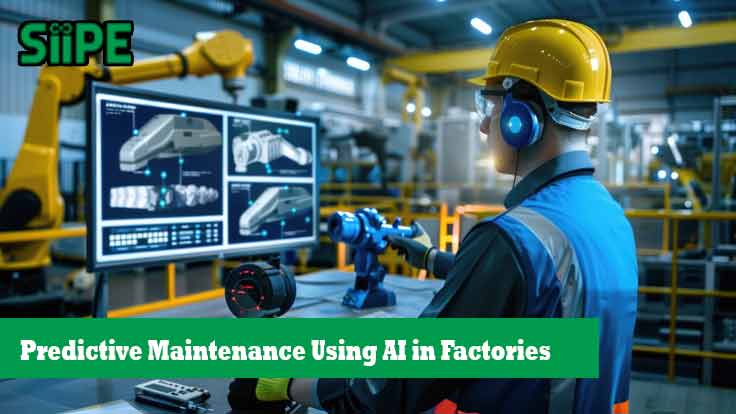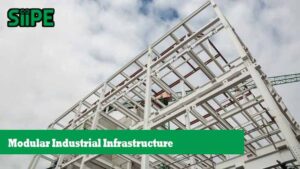In today’s rapidly evolving industrial landscape, unplanned downtime can be catastrophic for manufacturing operations. It disrupts productivity, increases maintenance costs, and negatively impacts revenue. To combat this, many factories are turning to predictive maintenance using AI (Artificial Intelligence) — a game-changing approach that leverages data and machine learning to anticipate equipment failures before they happen.
This article explores what predictive maintenance is, how AI transforms traditional maintenance practices, and how factories are adopting this cutting-edge technology to optimize operations.
What is Predictive Maintenance?
Predictive maintenance (PdM) is a maintenance strategy that uses real-time data to monitor the condition of equipment. Instead of relying on routine schedules or waiting for machines to fail, predictive maintenance forecasts when a failure is likely to occur — allowing for timely interventions.
Key elements of PdM include:
-
Condition monitoring sensors (vibration, temperature, pressure)
-
Historical maintenance data
-
AI algorithms that analyze patterns and predict failures
The Role of AI in Predictive Maintenance
AI takes predictive maintenance to the next level by enabling:
-
Machine learning models that learn from historical and real-time data
-
Anomaly detection to identify irregular patterns
-
Predictive analytics to estimate remaining useful life (RUL) of assets
-
Automated alerts and maintenance recommendations
In essence, AI transforms raw data into actionable insights, empowering maintenance teams to shift from reactive to proactive maintenance.
Benefits of Predictive Maintenance Using AI
Implementing AI-driven predictive maintenance offers a range of advantages:
1. Reduced Downtime
By predicting failures early, factories can plan repairs during scheduled downtime, preventing unexpected halts in production.
2. Lower Maintenance Costs
Routine or reactive maintenance often leads to over-maintenance or emergency interventions. AI allows precise scheduling, reducing unnecessary costs.
3. Extended Equipment Lifespan
Early detection of wear or malfunction helps preserve machinery, reducing the need for frequent replacements.
4. Improved Safety
Predictive insights prevent catastrophic failures that could pose safety hazards to workers.
5. Higher Operational Efficiency
AI enables better allocation of maintenance resources and reduces manual inspections, freeing teams to focus on critical tasks.
How Predictive Maintenance Works with AI
The workflow of AI-driven predictive maintenance typically includes:
Step 1: Data Collection
Sensors collect data from machines — temperature, vibration, acoustic signals, voltage, etc.
Step 2: Data Transmission and Storage
Collected data is transmitted to a central cloud or edge server and stored in a database for processing.
Step 3: Data Preprocessing
AI systems clean, normalize, and categorize the data, removing noise or irrelevant values.
Step 4: Model Training
Machine learning algorithms are trained on historical failure data to identify warning signs and behavioral patterns.
Step 5: Prediction and Alert Generation
The trained model analyzes incoming data in real-time to detect anomalies and predict failures, sending alerts to the maintenance team.
Use Cases in Manufacturing Industries
Factories across various sectors are adopting AI-based predictive maintenance with tangible results:
✅ Automotive Industry
Robotic arms and conveyor belts are monitored for motor vibrations and temperature shifts. AI predicts potential motor burnout, allowing timely repairs.
✅ Food & Beverage Factories
AI ensures that packaging and processing machines operate within safe conditions, avoiding costly contamination or spoilage events.
✅ Heavy Machinery & Mining
In industries like mining or steel, predictive maintenance prevents damage to high-value assets such as hydraulic pumps or turbines.
✅ Textile Manufacturing
Sensors detect misalignment or component degradation in looms and spinning machines, reducing fabric waste and machine idle time.
Technologies Powering Predictive Maintenance
Several technologies support AI-based predictive maintenance:
-
IoT Sensors: For real-time monitoring of equipment health
-
Edge Computing: For processing data close to the source, reducing latency
-
Cloud Platforms: For scalable storage and advanced data analytics
-
Digital Twins: Virtual replicas of equipment used for simulation and failure prediction
-
AI & ML Frameworks: TensorFlow, PyTorch, or specialized platforms like IBM Maximo and Azure Machine Learning
Challenges in Implementing Predictive Maintenance
While the benefits are clear, implementation can be challenging:
🧱 Data Quality and Availability
AI models require vast, accurate data sets to function properly. Many legacy systems lack the infrastructure to gather this data.
⚙️ Integration with Existing Systems
Integrating predictive analytics with current manufacturing systems can be complex and time-consuming.
💰 High Initial Investment
Installing sensors, setting up cloud platforms, and training personnel involve upfront costs that may deter small manufacturers.
📊 Interpreting AI Insights
Even with predictions, interpreting and acting on AI-generated alerts requires skilled technicians and trust in the system.
How to Get Started with AI-Powered Predictive Maintenance
For factories considering implementation, here are some steps to begin:
-
Assess Current Maintenance Practices: Identify pain points, failure trends, and critical assets.
-
Start Small: Pilot predictive maintenance on one machine or production line.
-
Invest in the Right Tools: Choose sensors, AI platforms, and software that suit your industry.
-
Train Your Team: Equip your staff with skills to interpret insights and manage AI systems.
-
Measure ROI: Track downtime reduction, cost savings, and machine performance improvements.
The Future of Predictive Maintenance
As AI continues to evolve, predictive maintenance will become more accurate, autonomous, and accessible. Future advancements include:
-
Self-healing systems that auto-correct minor issues
-
AI-driven inventory management for spare parts
-
Greater use of augmented reality (AR) for on-site diagnostics
-
Cross-factory learning, where AI models learn across multiple factories or locations
Ultimately, AI-driven predictive maintenance will not only reduce costs but also transform factories into smart, responsive ecosystems.
Predictive maintenance using AI is not just a trend — it’s a necessity for modern factories aiming to stay competitive. With benefits such as minimized downtime, extended asset life, and enhanced safety, AI is redefining how maintenance is performed.
As technology matures and adoption becomes more widespread, the factories that embrace predictive maintenance today will lead the way in operational excellence tomorrow.











